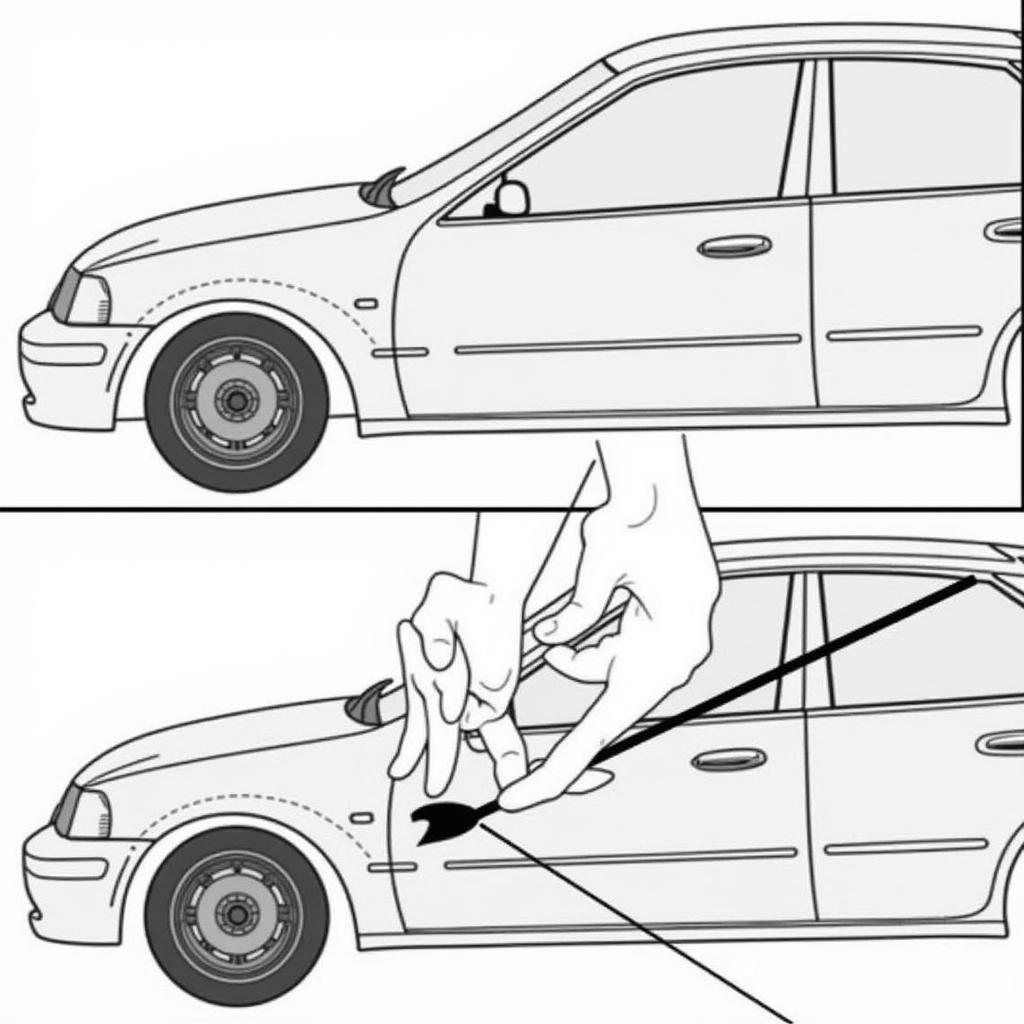Car Stereo Problems can be frustrating, ranging from minor annoyances to complete silence. This guide provides comprehensive troubleshooting steps and solutions for common car stereo issues, helping you get your audio system back on track. We’ll cover everything from loose wiring to blown fuses, offering practical advice for DIY enthusiasts and professionals alike. Read on to diagnose and fix your car stereo problem.
Common Car Stereo Problems and Their Solutions
Many car stereo problems can be easily diagnosed and fixed with a little know-how. Let’s explore some of the most common issues and their solutions.
No Power at All
- Check the Fuse: This is the most common culprit. Locate your car’s fuse box (usually under the dashboard or in the engine compartment) and check the fuse related to the car stereo. If it’s blown, replace it with a fuse of the same amperage.
- Verify Power Connections: Ensure the power and ground wires to your stereo are securely connected. A loose or corroded connection can interrupt power flow. physics problem set for car crashes can sometimes cause damage to wiring, so inspect carefully.
- Test the Head Unit: If the fuse and wiring seem fine, the head unit itself might be faulty. Try connecting a known working head unit to verify.
Sound Cuts Out Intermittently
- Loose Wiring: Vibrations from driving can cause wires to become loose over time. Check all connections behind the stereo and at the speakers.
- Damaged Speakers: A failing speaker can cause intermittent sound. Test each speaker individually to isolate the problem.
- Wiring Harness Issues: The wiring harness that connects the stereo to the car’s electrical system can sometimes develop shorts or breaks, leading to intermittent audio.
Distorted Sound
- Speaker Problems: Blown or damaged speakers are a common cause of distorted sound. Inspect the speaker cones for tears or damage.
- Amplifier Issues: If you have an external amplifier, it could be the source of distortion. Check its connections and settings.
- Grounding Problems: A poor ground connection can also introduce distortion. Ensure the stereo’s ground wire is securely connected to a clean metal surface on the car’s chassis.
No Sound from One or More Speakers
- Wiring Problems: Check the wiring connections to the affected speakers. A loose or disconnected wire is a common culprit. Sometimes, after a car collision physics problem impulse, wiring can become damaged.
- Blown Speaker: Test the speaker with a multimeter or by connecting it to another known working audio source. A blown speaker will not produce any sound or will produce a distorted, crackling sound.
- Balance/Fade Settings: Ensure the balance and fade settings on your stereo are not accidentally set to favor certain speakers.
Diagnosing and Fixing Antenna Problems
Poor radio reception is often related to antenna issues. Here are some troubleshooting tips:
- Check the Antenna Connection: Ensure the antenna cable is securely connected to the back of the stereo.
- Inspect the Antenna Mast: Check for damage to the antenna mast itself. A bent or broken mast can significantly affect reception.
- Antenna Amplifier: Some cars have an antenna amplifier. If this fails, it can cause poor reception. Test the amplifier’s power supply and connections.
 Replacing a Car Radio Antenna
Replacing a Car Radio Antenna
“A common mistake people make is replacing the entire head unit when the problem is simply a blown fuse. Always start with the basics,” advises John Miller, a veteran automotive electrician with over 20 years of experience.
Advanced Troubleshooting: Using a Multimeter
A multimeter can be invaluable for diagnosing car stereo problems. You can use it to test fuses, wiring continuity, and speaker functionality.
- Testing Fuses: Set the multimeter to continuity mode. Touch the probes to each end of the fuse. A continuous beep indicates a good fuse; silence indicates a blown fuse.
- Checking Wiring Continuity: Set the multimeter to continuity mode. Test the continuity of each wire from the stereo to the speakers. This helps identify breaks or shorts in the wiring.
- Testing Speakers: Set the multimeter to resistance (ohms) mode. Touch the probes to the speaker terminals. A reading within the speaker’s specified impedance range indicates a good speaker.
“Using a multimeter can save you time and money by helping pinpoint the exact issue,” adds Maria Sanchez, a certified automotive technician. “It eliminates guesswork and allows for more targeted repairs.” For instance, after an injury in car collision physics problem, checking the wiring is crucial.
Conclusion
Car stereo problems can range from simple to complex. However, by following these troubleshooting tips, you can often diagnose and fix the issue yourself. Remember to always start with the basics, like checking fuses and connections. If you’re uncomfortable working on your car’s electrical system, it’s always best to consult a qualified technician. If you need assistance, connect with AutoTipPro at +1 (641) 206-8880 or visit our office at 500 N St Mary’s St, San Antonio, TX 78205, United States. We can help you troubleshoot your car stereo problem and get your music playing again. Dealing with a car crash impulse problem can also affect your car stereo.






Leave a Reply